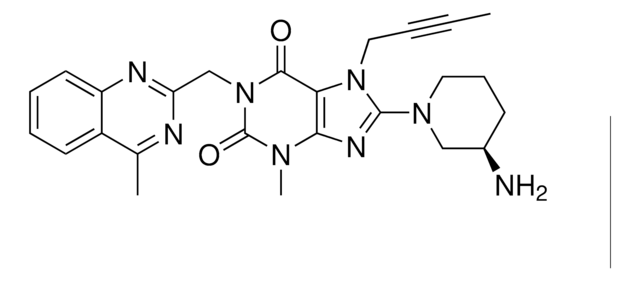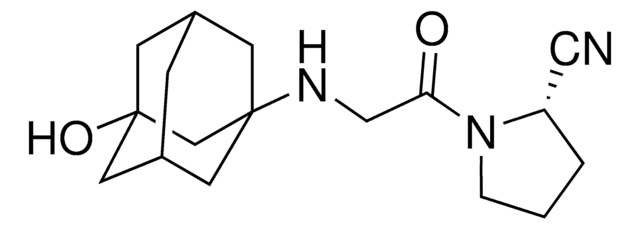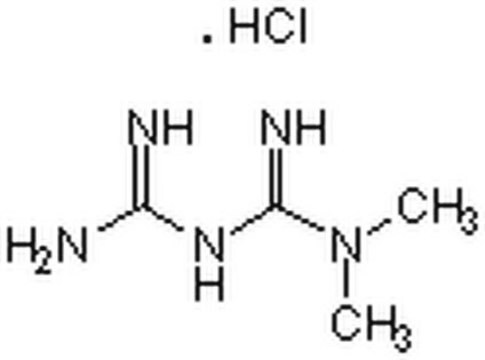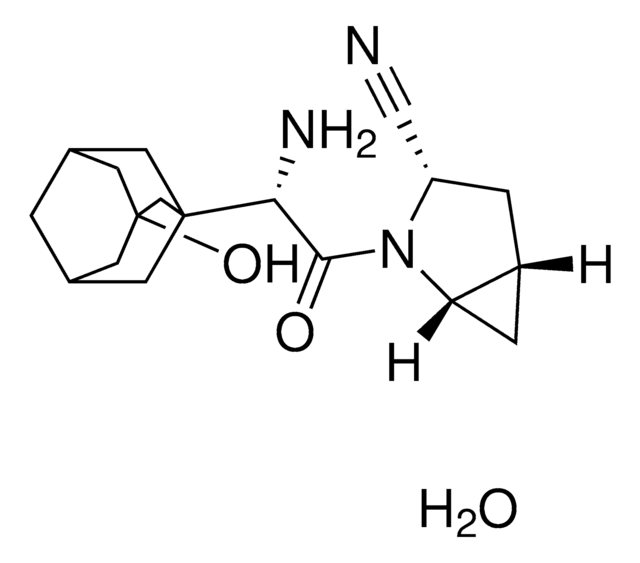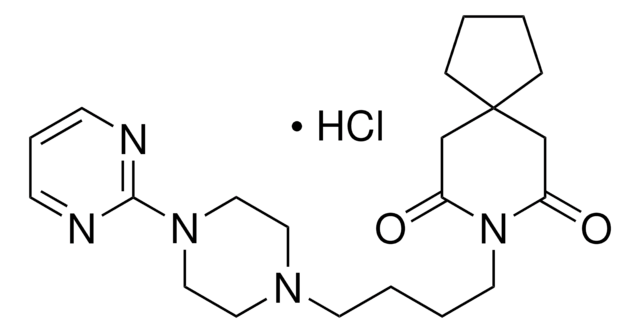SML3205
Sitagliptin
≥98% (HPLC)
Synonym(s):
(2R)-4-Oxo-4-[3-(trifluoromethyl)-5,6-dihydro[1,2,4]triazolo[4,3-a]pyrazin-7(8H)-yl]-1-(2,4,5-trifluorophenyl)butan-2-amine, (3R)-3-Amino-1-[5,6-dihydro-3-(trifluoromethyl)-1,2,4-triazolo[4,3-a ]pyrazin-7(8H )-yl]-4-(2,4,5-trifluorophenyl)-1-butanone,, MK 0431 free base, MK 431 free base, MK-0431 free base, MK-431 free base, MK0431 free base, MK431 free base
About This Item
Recommended Products
Quality Level
assay
≥98% (HPLC)
form
powder
optical activity
[α]/D -17 to -23°, c = 0.5 in chloroform-d
color
white to beige
solubility
DMSO: 2 mg/mL, clear
storage temp.
−20°C
InChI
1S/C16H15F6N5O/c17-10-6-12(19)11(18)4-8(10)3-9(23)5-14(28)26-1-2-27-13(7-26)24-25-15(27)16(20,21)22/h4,6,9H,1-3,5,7,23H2/t9-/m1/s1
InChI key
MFFMDFFZMYYVKS-SECBINFHSA-N
Biochem/physiol Actions
signalword
Warning
hcodes
Hazard Classifications
Eye Irrit. 2 - STOT RE 2
target_organs
Liver
Storage Class
11 - Combustible Solids
wgk_germany
WGK 3
flash_point_f
Not applicable
flash_point_c
Not applicable
Choose from one of the most recent versions:
Certificates of Analysis (COA)
Sorry, we don't have COAs for this product available online at this time.
If you need assistance, please contact Customer Support.
Already Own This Product?
Find documentation for the products that you have recently purchased in the Document Library.
Related Content
Interrogation of protein pathways is a foundational part of drug discovery research and drug development. Explore more about protein pathway analysis, including chemical library screening, investigating protein and enzyme activity, and modulating protein pathways by using small molecules.
Our team of scientists has experience in all areas of research including Life Science, Material Science, Chemical Synthesis, Chromatography, Analytical and many others.
Contact Technical Service